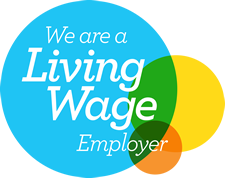
Insights
Helping not-for-profit organisations develop and sustain
the highest levels of employee and volunteer engagement

Insights
The wildfire is over, great news, problem solved. No, it just ran out of trees.
Like wildfire, the term ‘burnout’ is spreading everywhere and is a concern for all industries in every sector. It may be an issue for yourself, almost certainly for someone you know or work with. It is not a yoga-fixable issue, nor is it something for an individual to tackle alone. As an organisation you can make a difference.
It is essential to recognise, understand, measure and address burnout among your employees.

Non-profits are also a perfect breeding ground for burnout – full of compassionate, hard-working and generous people ready to assist others in putting on their oxygen masks, even if it means neglecting their own. One study in 2021 found 90% of charity workers have felt stress, overwhelm or burnout over the past year.
So, what is burnout, and why does it matter?
Crucially – burnout is NOT feeling stressed, or tired, or anxious.
Stress in small doses can be good, it shows we are engaged, that we care, it can give us energy – like the embers of a fire warming your living room. Of course, too much and it can get out of control (wildfires!).
Burnout is a step beyond stress. People who are experiencing burnout in the true sense of the word are shutting down, disconnecting, they are not stressed because they no longer care – or more accurately, they no longer have the capacity to care. More like the sullen aftermath of a wildfire.
Psychology Tools has published a resource on Understanding Burnout, which tells us that when you are stressed, your emotions are heightened, you become more active, you feel anxious, your work seems meaningful. When you are burnt out, your emotions are dulled, you become more withdrawn, you feel low, and your work seems meaningless.
Christina Maslach – a professor leading on defining, predicting, and measuring burnout – emphasises that burnout is not a medical condition, it is a workplace phenomenon.
Burnout comes with a high cost to any organisation, especially for not-for-profits:
These are just a few of the well documented promises a workforce with high burnout will make to you.
Studies have shown that burnout often hits hardest in sectors with compassionate employees. People are so bought into the mission, they feel that taking a moment for themselves is selfish, or a feeling they are depriving their beneficiaries each minute they don’t commit. Does this ring true for you?
We know this is significant for non-profits. Our data collected over the last 5 years shows on average 96% of staff are committed to the work, while 90% are willing to put in extra effort.
The sad irony is that a person can offer more, care more, and deliver on the mission for longer when their organisation targets burnout and secures their wellbeing.
Burnout is a systemic issue – one to address urgently. As they say, prevention is better than a cure. I had a serious knee injury last year, torn ligament, the works. Looking back, I had plenty of opportunities to stop and let my knee recover. It was sore, I ignored it, it swelled up, I ignored it, finally… POP.
What do all these factors have in common?
They are systemic issues, cultural issues, puzzles for management to solve. Yes, an individual has a degree of control, exercise, yoga, meditation, socialising – these are all known levers a person can use to manage their stress – they can water the plant, but if the soil is bad, nothing will grow. The organisation is the environment, where they can breathe, and grow, or wheeze and wilt.
As discussed by McKinsey (I’d recommend reading this) – who identify toxic workplace culture as the single most important factor in burnout – mindfulness Mondays, Yoga Fridays, and other wellness strategies simply won’t have the desired impact if we aren’t addressing the core of burn out: organisation culture.
Is burnout an issue within your organisation? How big of an issue is it? Who is it affecting? Is it just one department that needs support, or several? Is it more women, or men? Are younger or older people more affected?
We ran a survey with an international non-profit organisation with close to 1000 employees. Of the 557 respondents:
There was significant variation between departments within the organisation. For large departments, prevalence of burnout ranged from 10% to 54%.
If I may boldly continue my knee injury analogy… simply assessing your body as a whole and saying “20% is in pain” isn’t going to cut it. Do I apply cream everywhere? This sounds like a waste of resources, time and frankly, a bit gross.
Where exactly is the pain? The knee (in your case maybe HR, Comms, or a specific service)? Okay great, lets focus on this area and tailor the support provided.
Not waving but drowning. Burnout is hard to spot – many will “smile and wave” and get through the day. Maslach explains how burnt-out individuals find ways to cope, for example, taking additional breaks, slowing down, withdrawing emotionally, and committing less of themselves.
There are some fantastic tools which have been developed for organisations to assess the rate of burnout amongst employees:
It is better to assess burnout at a high level, i.e., for the whole organisation and departments, not for specific individuals. It should not be a case of tapping people on the shoulder, “diagnosing” them and risking alienating your workforce. Assessments must be confidential – people must feel safe and trust you in order to give honest feedback.
By running a survey which asks the right questions, you can gain a good level of understanding of burnout within your organisation.
With good benchmarking data, you can then also see these levels of burnout in the context of your sector. As we know, mission-driven organisations are susceptible to high employee burnout, so comparing with similar organisations will be a more helpful comparator than other vastly different sectors.
In unearthing the causes and levels of burnout, employers have a real opportunity to increase engagement, nurture productivity, retain talent, and make a difference in the lives of their employees.
https://www.bps.org.uk/psychologist/burnout-modern-epidemic-occupational-stress
https://www.charitycomms.org.uk/how-to-spot-and-stop-burnout

5 Linford Forum
Rockingham Drive
Milton Keynes
MK14 6LY
UK
Company No: 4509427
